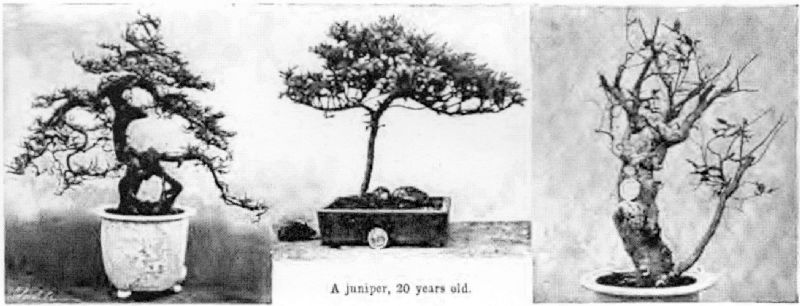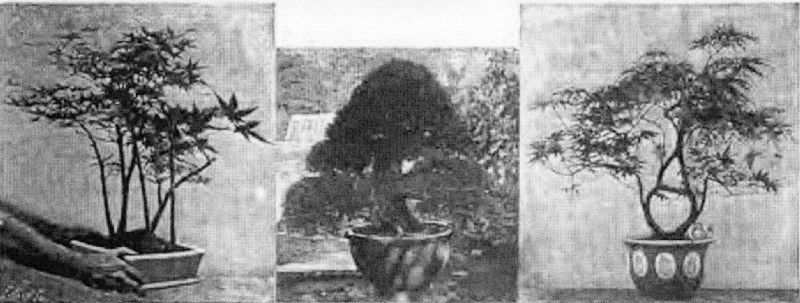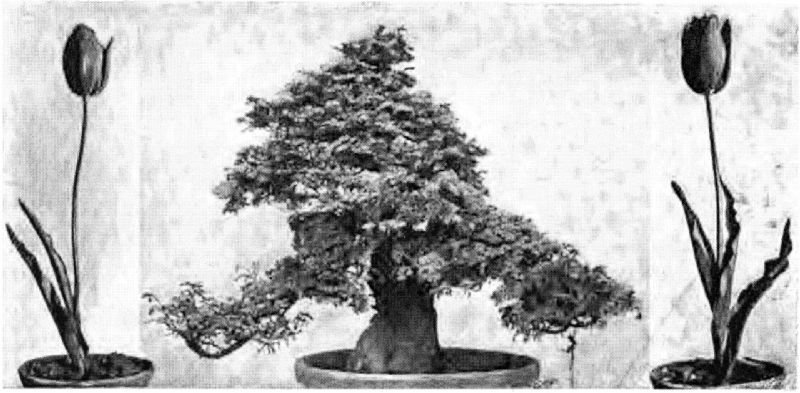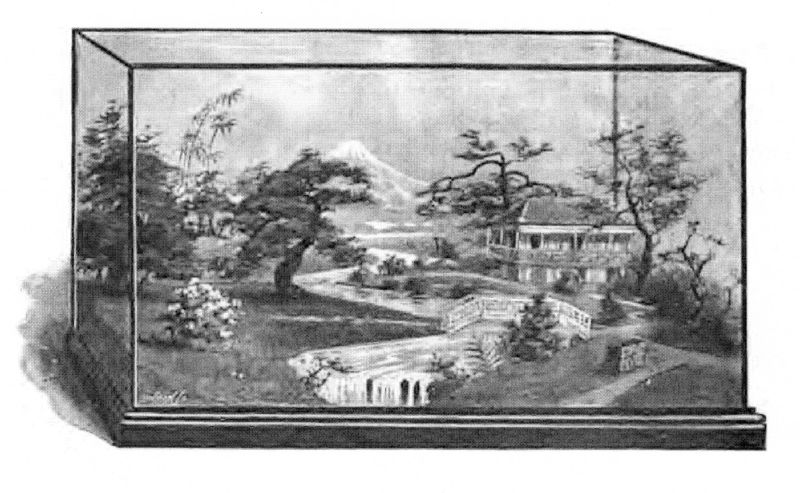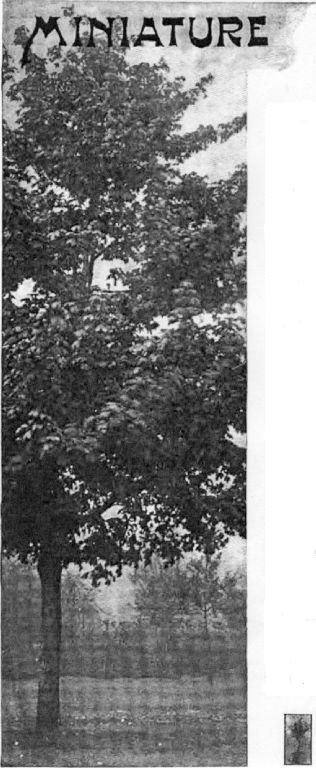 |
TREES . Just why the Japanese should be the only [sic] people in the world who stunt the growth of their trees is difficult to explain. The probability is that, being of such small size themselves, they like to magnify their inches by comparison with the artificially dwarfed trees of their gardens. The correct method of dwarfing trees is not, by any means, common knowledge in Japan. Its secret is carefully guarded by guilds of florists, formed several hundreds of years ago, whose chief idea of art lies in defying, distorting, or exaggerating nature. In the primitive stage of the guilds' existence they satisfied themselves by clipping trees into the weird shapes of idols, boats, houses — anything opposed to the shrub's natural growth. But gradually, as the members of the guilds advanced in knowledge, they became more ambitious in their experiments, with the result that they can now produce trees (which in this country grow to a height of 40ft. or 50ft.) not more than a foot high. This, however, is not the most wonderful of their achievements. They can not only dwarf ihe trees to a chance height, but they will stunt them to any set height they please. If you want a tree 18in. high, they will get one for you; but at the same time they would be just as ready to make it only 9in. high. This power to produce trees of any size the Japanese use to the utmost advantage in the making of miniature gardens. Taking as a model a European painting of a landscape, they set to work and reproduce it in life to the smallest detail. I say "a European painting" advisedly, though the landscape is invariably of Japanese scenery; for Japanese paintings, as everyone knows, are practically devoid of perspective. So, having hit upon the subject, they commence on the foreground by planting trees a few inches in height. Seven or eight yards away a background of [237] miniature mountains is built of beautifully colored rockery. From the foot of these mountains a tiny trickle of water winds around, forming cascades and lakes. Marble bridges span the few inches from bank to bank, and queer-shaped pagodas nestle amidst the dwarfed foliage, within sound of its lapping waters. As the river nears the foreground it expands into a raging cataract, quite a foot in width, eventually disappearing by the aid of a drain pipe beneath the base of a young Mont Blanc. |
